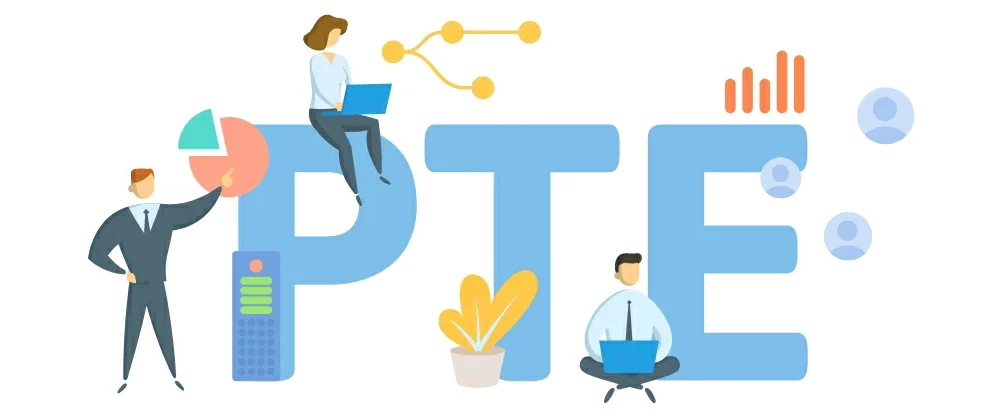When it comes to choosing between PTE and IELTS for your language proficiency evaluation, the decision might seem straightforward at first glance. However, the intricacies of each test often leave test-takers pondering: Is PTE really harder than IELTS?
The answer to this question is not as clear-cut as one might think. As you navigate the nuances of these two exams, you’ll find yourself considering various factors that could significantly impact your performance and ultimate success in achieving your language proficiency goals.
Testing Format Variances
- When comparing the testing formats of PTE and IELTS, you may find distinct differences in the way each exam assesses language proficiency. PTE, or the Pearson Test of English, is a computer-based exam that utilizes AI technology to evaluate test-takers’ language skills. In contrast, IELTS, the International English Language Testing System, incorporates a face-to-face speaking component with examiners assessing spoken English directly.
- One of the key differences between PTE and IELTS lies in the speaking section. PTE presents challenges such as speaking into a microphone without any human interaction, which can be daunting for some test-takers. On the other hand, IELTS involves a more traditional speaking test where candidates engage in a conversation with a real person.
- These differences in testing formats can impact candidates differently based on their preferences and comfort levels. While some may find the AI-driven approach of PTE more convenient, others may prefer the human interaction provided by IELTS. Understanding these variations can help test-takers choose the exam that aligns best with their strengths and preferences.

Scoring System Variability
- The distinction in testing formats between PTE and IELTS also extends to the variability in their scoring systems, impacting how language proficiency is evaluated for test-takers. These scoring differences are crucial in understanding the nuances that differentiate the two tests. While both PTE and IELTS assess language skills, the way they score responses can lead to variations in results.
- PTE utilizes automated scoring algorithms that assess responses based on predefined criteria, offering consistency and objectivity in evaluation. In contrast, IELTS employs human examiners for the Speaking and Writing sections, introducing a subjective element that can influence scores. This difference in scoring mechanisms can affect how test-takers perceive the exam difficulty and interpret their results.
- Understanding the scoring systems of PTE and IELTS is essential for test-takers aiming to achieve their desired scores. By recognizing the scoring differences and how they impact exam difficulty, individuals can better prepare and strategize for either test to showcase their language proficiency effectively.
Time Constraints Comparison
- Comparing the time constraints between PTE and IELTS reveals significant differences in the allocated duration for completing each section of the exams. In the PTE exam, time management is crucial as each section, such as speaking, writing, reading, and listening, has individual time limits ranging from 25 to 40 minutes. This structure requires candidates to efficiently allocate their time across various tasks, emphasizing the need for effective time management skills to complete each section within the designated timeframe.
- On the contrary, IELTS provides a more extended duration for the reading and writing sections, allowing test-takers approximately 60 minutes to complete each. This variance in time allocation can impact stress levels during the exam. Test-takers may feel more pressured in PTE due to the shorter timeframes, potentially leading to increased stress levels as they navigate through the different sections. Therefore, understanding the time constraints of each exam and practicing time management techniques are essential to optimize performance and mitigate stress levels during both PTE and IELTS.
Language Proficiency Assessment
- Moving from the time constraints comparison to the assessment of language proficiency in PTE and IELTS requires a keen understanding of the specific criteria used to evaluate candidates’ linguistic abilities. Both exams assess your English language skills, but they do so in different ways. PTE focuses on testing your integrated skills through tasks like summarizing spoken text and essay writing. On the other hand, IELTS separates the assessment into listening, reading, writing, and speaking sections.
- To excel in these assessments, incorporating effective study techniques is crucial. Utilize resources like official study guides, online tutorials, and language practice apps. Engage in regular practice exams to familiarize yourself with the test format and improve time management skills. Additionally, consider enrolling in prep courses or working with a tutor to receive personalized feedback and guidance.
Preparation Strategies for Success
- Utilize effective study techniques to enhance your preparation for success in language proficiency assessments like PTE and IELTS. When aiming to excel in these exams, it’s crucial to adopt a structured study plan. Begin by familiarizing yourself with the test format and content. Allocate specific time slots for each section, focusing on improving weaker areas while maintaining proficiency in stronger ones.
- Practice regularly to build confidence and reduce exam anxiety. Utilize resources such as practice tests, study guides, and online platforms to simulate test conditions. Implement active learning strategies like summarizing key points, teaching concepts to others, or participating in study groups to reinforce understanding and retention.
- Furthermore, prioritize consistency over cramming. Break down study sessions into manageable chunks to prevent burnout and facilitate long-term memory retention. Set achievable goals, track your progress, and adapt your study plan accordingly. Remember to take breaks, stay hydrated, and get sufficient rest to optimize cognitive function during preparation and on exam day. By employing these study techniques and managing exam anxiety effectively, you can enhance your chances of success in language proficiency assessments.
Conclusion
In conclusion, while both PTE and IELTS have their own unique challenges, it ultimately depends on individual strengths and weaknesses. PTE may be considered harder for some due to its format variances and scoring system variability, while others may find IELTS more challenging because of its time constraints and language proficiency assessment. It’s important to carefully assess your skills and choose the test that aligns best with your abilities for optimal success.